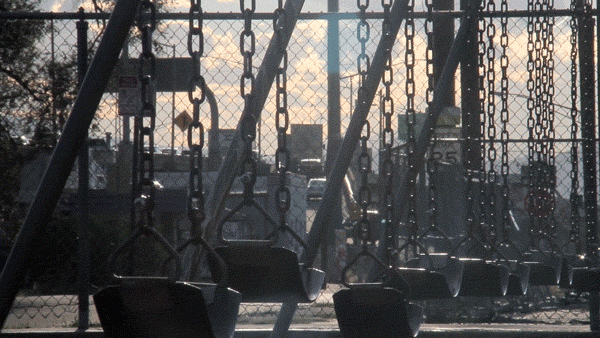
CDOT recently released a new air quality analysis for the I-70 corridor expansion that predicts that particulate pollution from the wider highway will be much less than previously believed.
Following directions from the EPA, the new analysis used a higher level of background pollution as the baseline, so if the level of particulate pollution hadn't come down, the I-70 project would have been in violation of EPA guidelines.
These findings surprised opponents of the project, to put it mildly, and they want the state transportation department to show its work before closing a public comment period to provide feedback on the new analysis.
"These differences are so large that they draw into question the credibility of the latest hot-spot analysis," attorney Bob Yuhnke wrote in a letter to CDOT asking for much greater documentation of the changes.
"The credibility of the current analysis is especially suspect in view of the failure to provide any of the underlying data used to obtain these results, and the failure to offer any rational explanation for the differences."
The pollutant in question is PM10.
PM10 refers to a mix of solids and liquid droplets less than 10 microns in diameter. It comes from road dust, sand and de-icing materials put down in the winter, diesel exhaust and wear and tear on brakes and tires. PM10 can cause nose and throat irritation, lung damage and bronchitis.
Denver has been in compliance with federal regulations on PM10 levels since 2002, but the EPA requires ongoing maintenance and monitoring to make sure levels don't rise too high again. Highway expansions require a PM10 hot-spot analysis when they meet certain criteria, including carrying a lot of diesel truck traffic.
CDOT already did an air quality analysis for the environmental impact statement that went off to Washington, D.C., with all the other documentation to obtain final approval from the Federal Highway Administration. That decision is pending.
The first analysis found PM10 concentrations of 46 and 63 micrograms per cubic meter at two different hot-spots. That's over a 24-hour period. When that was added to a background PM10 concentration of 89 micrograms per cubic meter, the totals were 135 and 152 respectively. The higher levels were at the "mousetrap" interchange of I-25 and I-170, the lower levels at the interchange of I-70 and I-225. The federal standard calls for levels not to exceed 150 micrograms per cubic meter over a 24-hour period.
This is important because projects that violate Clean Air Act standards aren't eligible for federal funding.

Why did CDOT do a new analysis when the environmental impact statement was complete?
In the years CDOT has been working on the project, the Denver Regional Council of Governments did a new regional transportation plan that included new projections around traffic and emissions, according to CDOT spokeswoman Rebecca White.
One of the criticisms of the last air quality analysis was that it used a 2035 plan instead of the newer 2040 plan that came out this year. White said CDOT agreed with that criticism and redid the air quality report using new regional projections.
The new air quality report was posted in mid-December with a public comment period that runs through Jan. 14.
The background pollution levels in this analysis are higher -- 113 micrograms per cubic meter over a 24-hour period, not 89. In June, a scientist with the EPA Region 8's Air Program emailed CDOT officials to flag a potential error in the EIS and said they should have used the higher background levels.
But the PM10 levels produced by the highway project are lower in the new analysis, between 32 and 41 micrograms at three locations along the corridor: the Mousetrap, Swansea and I-70/I-225. With the higher background level, the project comes in between 145 and 154 micrograms total, which CDOT rounds down to get to compliance at 150.
Those levels represent high pollution days, not the levels that would be present every day.
"The results demonstrate that the project will meet the Transportation Conformity requirement for PM10 since Central 70 will not cause or contribute to any new localized violations, nor will it increase the frequency or severity of any existing violations," the new analysis states.
What about DRCOG's 2040 transportation plan leads to the lower levels of pollutants?
White said analysts now expect greater emissions reductions as vehicles become more fuel efficient and more electric vehicles are on the road, so even a wider I-70 that carries more traffic could produce less pollution than previously expected.
Steve Cook, a transportation modeling and operations manager for DRCOG, said the 2040 Regional Transportation Plan does call for reduced levels of many pollutants, but PM10 levels aren't actually coming down that much regionally. That's because so much of PM10 comes from road dust, de-icing materials and other factors that won't be affected by cleaner vehicles.
DRCOG's 2040 plan incorporates the proposed I-70 widening and predicts the region as a whole will still be in compliance with federal air quality standards, but Cook said the DRCOG plans aren't intended to be a project-level analysis.
The methodology section of the analysis says that CDOT used new traffic analysis from DRCOG and incorporated minor design changes in the highway, but it doesn't provide details about how that changed the analysis.
All of that has opponents asking for much more detailed information -- and the time to analyze it.
"The process is so corrupt that they come out with the exact number they need no matter what the standard is," Yuhnke said in an interview. "They're all over the map. They're coming in 34 percent lower. It's not marginal. A third of the entire project emissions disappeared. How can that be?"
If the previous estimates are the correct ones, he said, then the project is far out of compliance and residents will be exposed to high levels of pollution on a regular basis.
Yuhnke's letter, sent Thursday afternoon on behalf of the Sierra Club's Rocky Mountain Chapter and other community groups, asks for information about what went into the modeling and what came out. How much traffic and what kinds of vehicles were used in the modeling? What changes were predicted for other receptors in the area? What road dust control measures were assumed to be in place and what commitments exist to actually implement those?
He also wants to know why CDOT responded to just this one criticism -- that it should incorporate 2040 data from DRCOG -- and not other concerns raised about previous analyses.
Yuhnke also asked that the public comment period -- set to close in less than two weeks -- remain open for at least 30 days after turning over the relevant material. But the new information really warrants a 45-day comment period under federal rules, he said.
White said CDOT doesn't see any reason to extend the comment period, and all the necessary data is available upon request.
"An extension of the comment period is not required nor warranted under the circumstances," she wrote in an email. "The regulations governing project-level conformity require an 'opportunity for public involvement in conformity determinations for projects where otherwise required by law.' ... Federal law does not require a minimum comment period, or one longer than the 30 days provided, for this type of determination."
White said that several people had requested and received additional information about the new analysis. The materials were provided to the Sierra Club Friday. Becky English, vice chair of the Sierra Club, said people from the team are reviewing the materials, but they need more time to really understand the modeling.
Opponents are fighting the project on several fronts, including a lawsuit against the EPA over changes to how it measures pollution that make it easier for the I-70 project to comply and an environmental justice civil rights complaint, which is currently under investigation. Yuhnke represents the Sierra Club, the Cross Community Coalition, the Elyria and Swansea Neighborhood Association and Citizens for a Greater Denver in the EPA lawsuit.
This story has been updated to include a response from CDOT.
Correction: This story has been changed to reflect the correct date for the closing of the comment period. It is Jan. 14.












